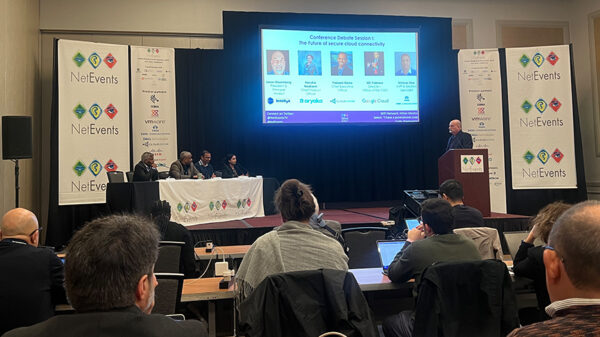By Juergen Lindner
SVP, SaaS Global Marketing Leader, Oracle
For the vast majority of us, the pandemic has been a very humbling and personally taxing experience. But it also came with a silver lining of sorts: We learned a tremendous amount on a journey that accelerated significant new trends in business and society.
From resignation to attraction
As the pandemic lingered, we heard a lot of talk about the “Great Resignation”– the troubling exodus of workers that threatened to undermine economic growth. This year, however, I expect that we will see this trend flattening out as businesses have moved quickly to adopt new HR practices and technologies that focus on employee well-being, retention and drawing in new talent by putting employees at the center of their business.
Increasingly companies are taking steps to avert employee burnout, address mental health challenges and invest into talent retention – a phenomenon some have labeled the “Great Retention”. I think we’ll go one step further to embrace what others are calling the “Great Attraction”. That’s when you focus on really being an employee of choice by better understanding the needs of your people, providing a more rewarding workspace, and crafting new work models that are more flexible and productive and personally rewarding.
In 2022, we can expect more companies to harness technology to become better in tune with their labor pool and tap new sources of talent. AI and ML-driven insights will show employees how they can best evolve in their career path and what skills they should acquire to shape their future in a more productive and rewarding way. Some may be surprised to know that people trust AI/ML-driven “robots” to provide smart career advice. In fact, a remarkable 82% of people in our survey said they believe robots could support their career better than humans.
The latest HCM solutions can discover emerging trends in the labor market and help you be more predictive and proactive in suggesting new career trajectories for employees. When your workers are challenged to learn something new, they are more likely to stay with you.
Frankly, if you’re not tapping into that sentiment, you might find your business on the receiving end of an eroding talent pool. We are now seeing that companies that invested more decisively in newer technologies are the ones coming out of the pandemic as early winners with the best chance of attracting talent. In my view, this will be a key differentiator between companies in the coming year.
Data + AI = Smarter finance
Technology has been transforming finance well before the pandemic came along, and this year we can expect finance departments to become more automated and data-driven than ever before. According to Gartner, 89% of the finance function is highly repetitive and automation can help reduce this tedium, freeing people to take on more rewarding roles such as driving innovation and advising lines of business.
We’ve seen how automating back-offices can improve efficiency, cut operational costs, and boost employee and customer satisfaction. Emerging AI and ML technologies will continue to fuel this success, liberating workers from repetitive tasks and helping augment the human potential. In finance, automation is making monotonous routines like book closings practically a non-event. At Oracle, even during the pandemic, we were able to shave several days off the closing cycle, to the point where we are now the fastest company in the S&P 500 to report earnings to the street.
If you think about it, everything in the business world has a financial aspect, whether it’s hiring, supply chain, or customer service. With access to data and insights across all Lines-of-business on a unified cloud, you can automate more tasks, innovate faster, and empower better decision-making.
Building a more resilient supply chain
The pandemic has completely altered how we look at supply chains. Today we’re constantly aware that supply chain disruptions can happen at any moment and it’s made us look at previous supply models in a radically different light. For example, the traditional strategy of “make in the east, buy in the west” may see alterations for many global enterprises going forward.
New habits that emerged during the crisis are almost certainly here to stay. Consumers became addicted to delivery during this time. New business models like curbside pickup turned from a touchless necessity during the pandemic to an attractive convenience that no one wants to give up.
We saw a new appreciation for supply chain flexibility as businesses learned to optimize for razor thin margins. The need for a localized supply chain drove companies to demand better visibility into stock levels, shortages, and attracting the right talent in new locations. To thrive in the new normal, supply chains must be able to provide access to this information almost instantaneously.
Businesses must also balance increased demand for environmental sustainability and ethical sourcing. This means that unless you can track every link of your supply chain and account for everything that goes into your product, you may soon lose your status as supplier of choice and risk putting your brand in jeopardy.
Joint-collaboration across your business functions
Tackling these challenges and seizing new opportunities in the year ahead will test the ability of companies to stay competitive – indeed to stay viable – in a quickly evolving global marketplace. Success will require new digital capabilities in business planning and insight, a more resilient supply chain and workforce, and systems for enabling continuous innovation. Companies that invest in technologies that can integrate supply chain and human resources on a single platform are poised to take the lead here and become smarter and more responsive to changing supply and demand.
Last year wasn’t easy for an economy hobbled by a virus that wouldn’t go away. But our renewed sense of humanity bolstered by smart investments in technology helped us navigate the turbulence and become even stronger and more resilient than before.



















































































































